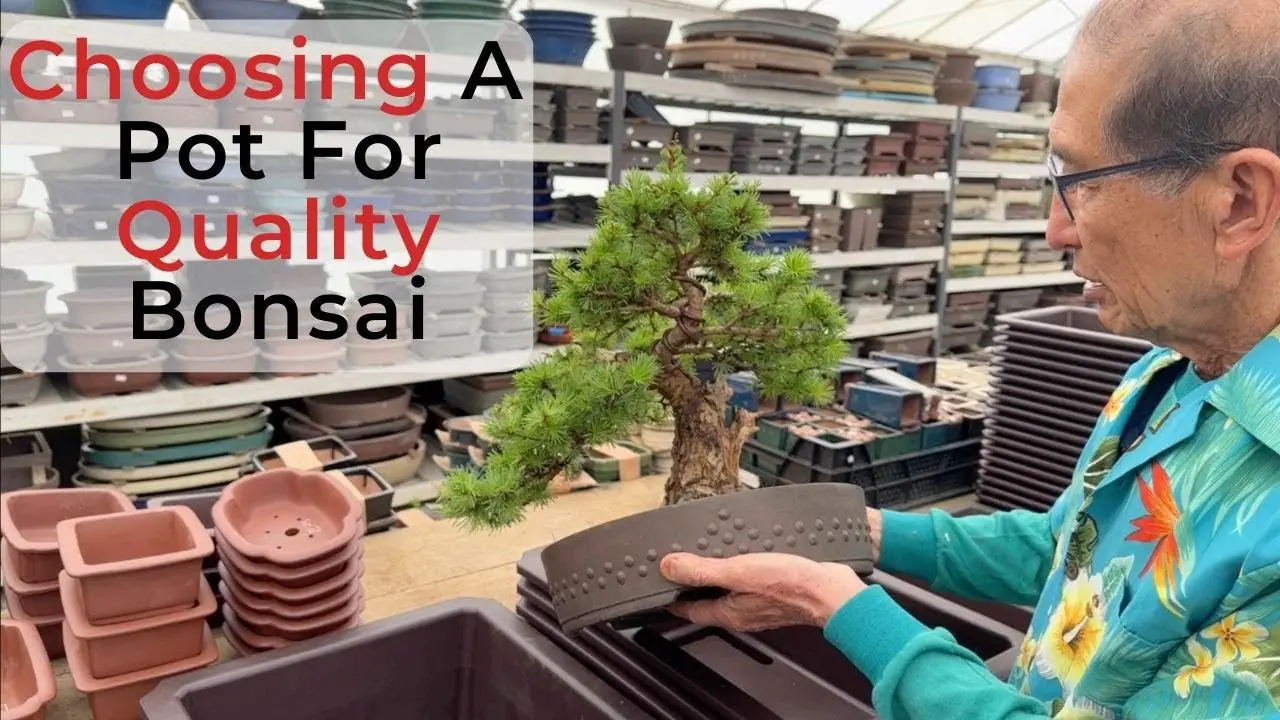If you’re a bonsai enthusiast, you know how important it is to choose the right pot for your tree. Not only does it provide a suitable environment for growth, but it also complements the aesthetics of your bonsai. In this blog post, we’ll explore the key factors to consider when selecting a pot for your bonsai. From size and shape to material and style, this guide will ensure you make an informed decision for your cherished tree. So, let’s dive into the world of bonsai pots and discover the one that’s just right for your growing masterpiece.
Introduction:
Bonsai is an ancient Japanese art form that involves growing miniature trees in small containers. One of the most critical aspects of bonsai cultivation is choosing the right pot for your tree. A suitable pot can enhance the aesthetic appeal of your bonsai, providing it with an ideal growing environment. In this article, we’ll take a closer look at how to choose pots for quality bonsai.
Choosing the Right Pot for Your Tree:
Picking the right pot for your tree requires careful consideration of size, shape, and color. Here are some tips that can help you find the perfect pot for your bonsai:
- Size Matters:
The pot size should be proportional to your tree’s size. If the container is too large, it will affect the tree’s root growth, leading to stunted growth. On the other hand, if the pot is too small, the roots will become cramped, leading to root rot and a shorter lifespan.
- Shape:
The Bonsai pot’s shape is an essential factor to consider as it affects the tree’s aesthetics and growth. Traditional bonsai pots have a tapered shape that widens towards the top. This shape serves two purposes: it allows for water drainage, and it creates a stable base for the tree.
- Color:
Choosing a pot color is a matter of personal preference. However, the pot’s color should complement the tree’s foliage to create an eye-catching display. Neutral-colored pots such as white, black, and brown are suitable for most trees, while brightly colored pots are best suited for trees with delicate foliage.
How to Select the Best Pot for Your Tree:
When selecting a pot for your tree, you should take the following steps:
- Take Your Tree with You:
To find the perfect pot, you need to take your tree to the place where pots are sold, so you can visualize how it will look in the container. Make sure the tree is stable in the pot and that the pot can hold its weight.
- Check the Drainage Holes:
Drainage holes are essential for preventing water buildup in the soil, which can lead to root rot. Ensure that there are enough drainage holes, and they are not blocked.
- Consider the Material:
Bonsai pots are typically made of clay, ceramic, or plastic. Each material has its advantages and disadvantages. Clay pots are porous and can lead to faster evaporation of water, while ceramic pots are sturdier and heavier. Plastic pots are lightweight, durable, and easy to clean.
- Purchase the Pot:
Once you have found the perfect pot, it’s time to purchase it. Ensure that you buy the pot from a reputable dealer to ensure its quality and authenticity.
Conclusion:
Choosing the right pot for your bonsai tree is an essential step towards ensuring its health and longevity. The ideal pot should be proportional to the tree’s size, have a suitable shape and color, and adequate drainage. By following the tips provided in this article, you can find the perfect pot for your bonsai tree.
FAQs:
-
How do I know if my bonsai tree needs repotting?
Ans. If the tree’s roots are visible from the soil’s surface or if the roots are circling at the pot’s bottom, it’s time to repot. -
Can I use any pot for my bonsai tree?
Ans. No. Bonsai trees require pots that provide proper drainage and have a suitable size, shape, and color. -
What is a bonsai pot’s ideal depth?
Ans. The ideal pot depth for bonsai should be around two-thirds of the tree’s trunk’s diameter. -
Can I use a pot without drainage holes?
Ans. No. Bonsai trees require proper drainage to prevent root rot. -
How often should I repot my bonsai tree?
Ans. It depends on the tree’s growth rate, but a general rule of thumb is to repot every one or two years.


